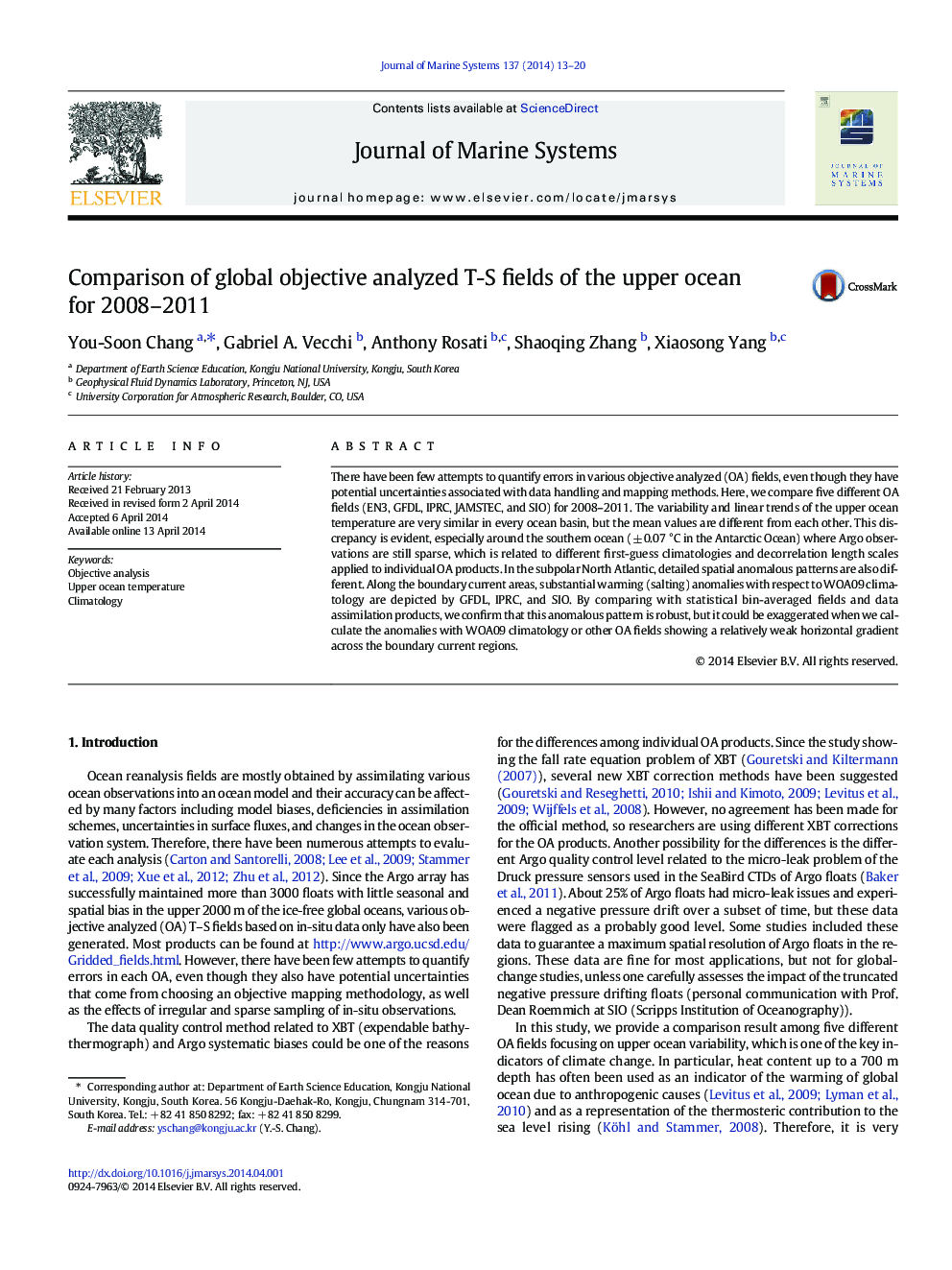| Article ID | Journal | Published Year | Pages | File Type |
|---|---|---|---|---|
| 4548028 | Journal of Marine Systems | 2014 | 8 Pages |
•Five different T-S objective analyzed (OA) fields have been compared.•Uncertainties related to different OA mapping procedures still remain even after Argo periods.
There have been few attempts to quantify errors in various objective analyzed (OA) fields, even though they have potential uncertainties associated with data handling and mapping methods. Here, we compare five different OA fields (EN3, GFDL, IPRC, JAMSTEC, and SIO) for 2008–2011. The variability and linear trends of the upper ocean temperature are very similar in every ocean basin, but the mean values are different from each other. This discrepancy is evident, especially around the southern ocean (± 0.07 °C in the Antarctic Ocean) where Argo observations are still sparse, which is related to different first-guess climatologies and decorrelation length scales applied to individual OA products. In the subpolar North Atlantic, detailed spatial anomalous patterns are also different. Along the boundary current areas, substantial warming (salting) anomalies with respect to WOA09 climatology are depicted by GFDL, IPRC, and SIO. By comparing with statistical bin-averaged fields and data assimilation products, we confirm that this anomalous pattern is robust, but it could be exaggerated when we calculate the anomalies with WOA09 climatology or other OA fields showing a relatively weak horizontal gradient across the boundary current regions.
